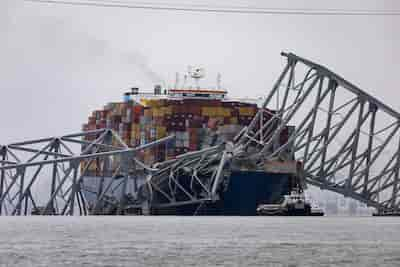Deadly Floods Kill Hundreds Across the Globe: Here’s Where the Devastation Is Happening.
During last week’s severe floods in northeastern Afghanistan, hundreds of people died, homes were washed away, and highways were devastated.
Many affected people reside in isolated places that are several hours’ journey from the closest metropolis.
In order to put together tales of amazing kid rescues from the floodwaters, the BBC spent a day in one of the villages most severely damaged in the area, interviewing witnesses and obtaining footage shot at the time.
When the water came in last Friday, Noor Ahmad and his family were at home.
Taking all eight of his family members to the rooftop, he hoped that his home’s walls would hold out since they had no other choice.
They could see the filthy, reddish-brown water pouring past them on all sides.
The walls of the courtyard broke way first. Then the structure fell, plunging all eight into the swift-moving, viscous water.
Noor tells me, “I remember thinking I had lost everything when the wall fell.” Our canvas tent is set up on the vacant lot where his house formerly stood.

“I assumed that we were done. While submerged, I prayed to God to take my life so that my troubles would end. Noor recalls being carried away and bumping his head on trees, buildings, and rocks. His head, left hand, and right foot are all heavily wrapped.
He holds up his hand to measure me and adds, “The skin on my head was sliced open; they had to sew a section this long back together.” Everywhere on his leg is covered with cuts. “Despite having broken hands and feet, I am grateful to God for my continued life and state of health.
Noor managed to live by holding onto an almond tree’s branches. However, Zulaikha, his 10-year-old daughter, was gone when he managed to pull himself to safety.
The mosque where Noor lives is across the street from where another rescue occurred.
Children covered in thick, gooey muck were shown sitting hunched together and trembling on the roof in an earlier video. Everyone had been hauled out of the floodwaters.
Among the men who assisted in their rescue was Habib Ullah.
He informs me, “I was in the mosque when the flood came through the door.” “Everyone was submerged. A few of us succeeded in climbing onto the roof. We knocked through a window with some assistance. My buddy lifted the kids up onto the roof after I had tied them up with shawls.
One by one, he gestures to them. Some people’s faces and heads are cut and bruised. We count eight children in all, the youngest of whom is just three months old.
Elham Uddin, 18, describes seeing something during the floods, downriver, as it bobs against a big tree that is wedged against the wall of his family’s land.
It was Zulaikha, the ten-year-old daughter of Noor Ahmad.
She was floating on her back near a tree, unable to stop herself with rocks or roots, and afraid to try to rise in case the water took her away, according to Elham Uddin.
Elham Uddin says, “My heart felt for her, but my father and mother said don’t go there, you will be taken by the flood.” It finally forced me to go get her and bring her home. I had this confidence in myself that I could succeed.
He gestures up to his chest.
“This is where the water reached. We arrived at our house together, me carrying her on my back. The majority of her body was hurt.
Zulaikha is shown in a video recorded after her rescue, buried in dirt and appearing disturbed but alive. According to her relatives, she is currently getting well at a relative’s home.
Zulaikha was sent to the hospital after being helped to clean her wounds, according to Elhamuddin, his mother, and sister.
“I am pleased with them,” Elhamuddin’s dad informs me. “They are Afghanistan’s national pride.” The entire globe is proud of them.
Until today, Noor had never laid eyes on the family who had saved his daughter’s life.
Elhamuddin pulls his scarf over his face and begins to cry as soon as he and his father go to Noor’s tent.
“My house is reduced to four bricks,” Noor states. “Even if I could give you everything right now, it would still not be enough to match what you have given me,” the speaker said.
Afghanistan news: Deadly flash floods devastate northern province, over 300 lives lost, including 51 children.
In northern Afghanistan, flash floods destroy livelihoods and leave hundreds dead or missing. Over 300 people are thought to have died as a result of Afghanistan’s very heavy seasonal rains, according to estimates from the UN Food Agency.
the destruction of thousands of homes, mostly in the province of Baghlan in the north, which was most hit by Friday’s intense rainfall. “The heavy rains and subsequent floods have disrupted lives and pose a significant risk to children in the affected provinces,” UNICEF South Asia stated in a post on X. Tajudeen Oyewale stated, “As always, UNICEF stands with the children and people of Afghanistan during this difficult time.
51 children are among the at least 240 people who have passed away, according to UNICEF. Relief teams and supplies, including medications and blankets, are being deployed by a number of foreign humanitarian groups, including UNICEF.
The delivery of seven tons of medications and emergency supplies to the impacted areas has also been confirmed by the World Health Organization (WHO).
Families who lost loved ones in the flash floods are pleading with the temporary government and regional and global organizations to remove the barriers and help others who are still stranded. The International Rescue Committee (IRC), which is organizing its emergency operations to address the floods affecting seven provinces, has stated that hundreds of thousands of people have been left isolated and without access to basic amenities.
On May 11, Richard Bennett, the Special Rapporteur for Human Rights in Afghanistan for the United Nations, called for immediate aid to flood victims in Afghanistan. Bennett stated that Afghanistan’s vulnerability to climate-related disasters is evident from the recent floods that have happened throughout the nation, particularly in Baghlan where many people have died.
Richard Bennett wrote on X, saying that the recent floods in Afghanistan, especially in Baghlan, which took many lives, are a sharp reminder of the country’s susceptibility to the climate issue and the need for both short-term and long-term preparedness by the Taliban and other international players. My sympathies go out to the victims’ families.
“Lives and means of subsistence have been swept away,” stated Arshad Malik, Save the Children’s country director. “Villages were devastated by the flash floods, which destroyed houses and killed cattle. Kids have lost everything. Assistance is desperately needed for families who are still suffering from the financial effects of the three-year drought.
About 600,000 people, half of whom are children, reside in the five Baghlan districts that have been severely damaged by the floods, according to assistance organization Save the Children. According to the AP, the organization deployed a mobile health and child protection team along with a “clinic on wheels” to assist kids and their families.
In April, the nation had flash floods and torrential rains that resulted in the destruction of four schools, three mosques, and almost 2,000 residences, killing at least 70 people.
According to Reuters, which cited the nation’s refugee agency under Taliban control, a series of catastrophic flash floods slammed Afghanistan’s northern Baghlan Province, resulting in at least 315 fatalities and over 1,600 injuries.
UNICEF reported on Sunday that at least 51 of the victims were children. The devastation caused by the severe rains was believed to have destroyed 3,000 dwellings in Baghlan Province and 300 in adjacent Takhar and Badakhshan Provinces.
In Indonesia, a river overflowed its banks on Saturday and Sunday, inundating towns on the island of Sumatra due to torrential rain, a frigid lava flow from the erupting volcano Mount Merapi, and destructive mudslides.
The National Disaster Management Agency of Indonesia was cited by the Associated Press in reporting that thirty-seven persons had died and over a dozen had been reported missing.
In South America, Rio Grande do Sul state in Brazil is still suffering from catastrophic floods; as of Sunday, the state’s administration reported that the death toll had reached 143.
Over 500,000 people have been displaced by the floods in Brazil, which started on April 29 and affected 446 municipalities; 81,285 of these individuals are now staying in shelters.
On April 29, when a storm system delivered torrential rainfall to South America, particularly southern Brazil and the country’s border with Uruguay, one of the most destructive floods started. The capital of Rio Grande does Sul, Porto Alegre, was among the hundreds of towns and cities inundated. Two weeks later, the country is still struggling to rebuild damaged communities and provide help, and the death toll keeps rising. The 14 de Julho hydroelectric dam broke on the Taquari River on May 2, worsening the area’s flooding conditions and knocking off electricity for thousands of people.



